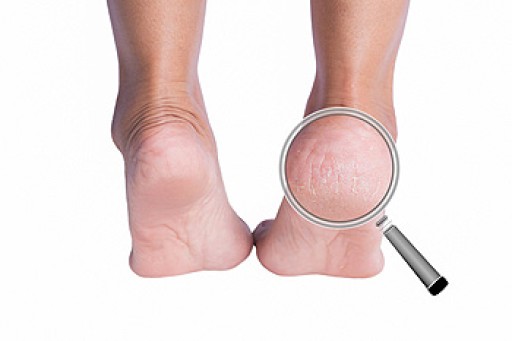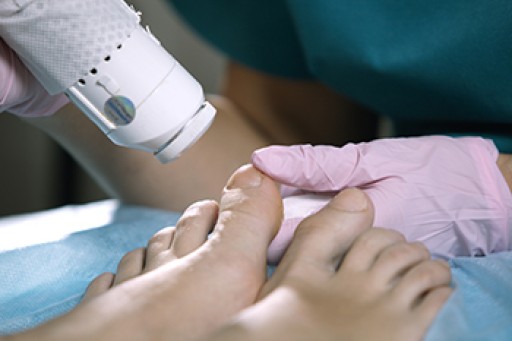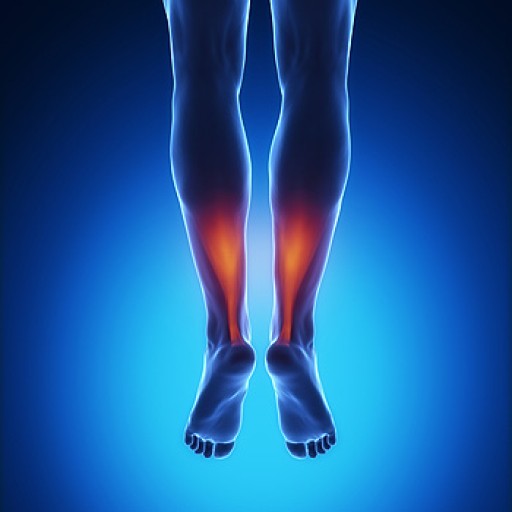Connect With Us
Blog
Cracked heels may make you want to think twice about showing off your feet in warmer weather. However, cracked heels may be harmful to more than just the appearance of your feet. If deep fissures and cracks develop in your heels, they may make walking and standing painful for you. Additionally, these openings make way for germs to enter through your skin and cause infection.
There are several different causes of cracked heels. One of the most common reasons for this ailment is dry skin. This problem may make your keeps feel rough tight and itchy. Dry skin may be caused by cold air, extremely hot water, harsh soaps, and aging. Skin disorders such as eczema and psoriasis may eventually lead to dry skin. In some cases, complications may arise from cracked heels. Some of these complications are a loss of feeling in the heel, cellulitis, or a diabetic foot ulcer.
There are ways you can try to prevent getting cracked heels. One of the best ways to do so is to avoid wearing flip flops and sandals because these shoes increase your risk of drying out your feet. You should also avoid wearing shoes with a tall skinny heel, because these shoes cause your heel to expand sideways. At night, you should slather on a thick moisturizing cream on your feet and then cover them in socks to keep your feet moisturized overnight. Drinking water to stay hydrated is also a good way to ensure that your skin doesn’t become dry.
If you suffer from a severe case of cracked feet, you should make an appointment with your podiatrist to see what treatment methods are best for you.
 Cracked heels can be unsightly. The skin on the heel becomes dry and thickened and can even start to crack or fissure. Anyone can develop cracked heels, but it is more likely to happen to those who wear shoes with open heels (like sandals), take very hot baths or showers, use harsh soaps, have cold/dry skin, stand for long periods of time, have a physical condition such as obesity, diabetes or eczema or some deformity of the foot, like flat feet. No matter what the cause of your cracked heels are, there are steps you can take to prevent and treat them. Removing dry skin with a loofah and applying a heavy moisturizer to the bottom of the feet regularly helps. Typically, cracked heels won't cause serious health concerns, but occasionally severely cracked heels can get infected and lead to a skin infection called cellulitis. If this condition persists, it is important to see a qualified podiatrist for proper diagnosis and treatment.
Cracked heels can be unsightly. The skin on the heel becomes dry and thickened and can even start to crack or fissure. Anyone can develop cracked heels, but it is more likely to happen to those who wear shoes with open heels (like sandals), take very hot baths or showers, use harsh soaps, have cold/dry skin, stand for long periods of time, have a physical condition such as obesity, diabetes or eczema or some deformity of the foot, like flat feet. No matter what the cause of your cracked heels are, there are steps you can take to prevent and treat them. Removing dry skin with a loofah and applying a heavy moisturizer to the bottom of the feet regularly helps. Typically, cracked heels won't cause serious health concerns, but occasionally severely cracked heels can get infected and lead to a skin infection called cellulitis. If this condition persists, it is important to see a qualified podiatrist for proper diagnosis and treatment.
Cracked heels are unsightly and can cause further damage to your shoes and feet. If you have any concerns, contact one of our podiatrists from Illinois . Our doctors can provide the care you need to keep you pain-free and on your feet.
Cracked Heels
Cracked heels appear unappealing and can make it harder for you walk around in sandals. Aside from looking unpleasant, cracked heels can also tear stockings, socks, and wear out your shoes. There are several methods to help restore a cracked heel and prevent further damage.
How Do You Get Them?
Dry skin is the number one culprit in creating cracked heels. Many athletes, walkers, joggers, and even swimmers suffer from cracked heels. Age and skin oil production play a role to getting cracked heels as well.
Promote Healing
Over the counter medicines can help, especially for those that need instant relief or who suffer from chronic dry feet.
Wear Socks – Wearing socks with medicated creams helps lock in moisture.
Moisturizers – Applying both day and night will help alleviate dryness which causes cracking.
Pumice Stones – These exfoliate and remove dead skin, which allows for smoother moisturizer application and better absorption into the skin.
Change in Diet
Eating healthy with a well-balanced diet will give the skin a fresh and radiant look. Your body responds to the kinds of food you ingest. Omega-3 fatty acids and zinc supplements can also revitalize skin tissue.
Most importantly, seek professional help if unsure how to proceed in treating cracked heels. A podiatrist will help you with any questions or information needed.
If you have any questions, please feel free to contact our offices located in Wheeling and Berwyn, IL . We offer the newest diagnostic and treatment technologies for all your foot care needs.
A new treatment for fungal nails, or onychomycosis, which has grown in popularity in recent years, is laser treatment. Laser treatment involves the use of a laser that kills fungus in the toenail with heat. Laser therapy causes no side effects and does not affect nearby healthy tissue.
Toenail fungus afflicts almost 10 percent of the U.S. population and is more common among the elderly. The most common symptom of toenail fungus is the discoloration and thickening of the nail. The nail can also become brittle and a foul smell may be produced. In rare cases, pain might be present. While it is not a serious condition, it can lead to a perception of disgust amongst those it affects. There are several different fungi that cause fungal infections. These include dermatophyte, yeast, and mold. The most common of these is dermatophyte.
Diagnosis for fungal nails involves a podiatrist utilizing microscopy and fungal cultures. This will allow the doctor to determine whether it is a fungus or another condition, such as lichen planus, psoriasis, nail damage, and onychogryphosis.
Fungus in the nails can be hard to get rid of with over-the-counter drugs. This is due to the nail being hard and protective, with fungus able to slip between the nail bed and plate. Furthermore the slow growth of the nail increases the difficulty of fungus going away. Laser treatment seeks to get around this by directly penetrating through the nail and killing the fungus. The laser is used on each infected nail for a couple of minutes. Patients then typically return several weeks or months later for another laser treatment. During this time the podiatrist will routinely observe the foot and infection. It is also recommended to wear clean socks and shoes and allow the feet to dry and breathe to prevent toenail fungus.
Laser treatment is still a relatively new treatment and not all podiatrists have laser machines. Ask your podiatrist if they do laser treatment for toenail fungus and if it is right for you.
Onychomycosis, or tinea unguium, is a type of fungal infection that can affect fingernails and, more commonly, toenails. If you have a fungal toenail infection your nail may become thickened, brittle, ragged, crumbly, or discolored. Toenails are made up of layers of fibrous keratin, which the fungus can get in between. The fungus can even grow underneath the nail or in the matrix of the nail (where it grows), causing the nail to separate from the toe. Each of these scenarios can make treating toenail fungus challenging when using oral or topical antifungal medicines. Laser therapy treatment to eradicate toenail fungus has become a popular and effective treatment because it can painlessly and accurately target the fungus within the layers, underneath, or in the matrix of the toenail without affecting healthy structures surrounding it. If you have toenail fungus, contact a podiatrist to see if laser treatment is right for you.
Laser treatment can be an effective way to get rid of toenail fungus. If you have any questions about laser treatment, consult with one of our podiatrists from Illinois . Our doctors will assess your condition and provide you with quality treatment for fungal nails.
What Are Toenail Fungal Infections?
Onychomycosis, or fungal infection of the nail, is a relatively common and non-serious condition. Around 10 percent of U.S. citizens are afflicted with fungal nails. Common forms of fungus that infect the nail include dermatophytes, yeasts, and molds.
Symptoms of Toenail Fungal Infections Include:
- Nail thickening
- Brittleness of the nail
- Discoloration of the nail
Diagnosis for Fungal Nails
Fungal infections are diagnosed by fungal culture and microscopy. This will rule out any other conditions such as nail trauma, psoriasis, lichen planus, and onychogryphosis.
What Is Laser Treatment?
Laser treatment is a non-invasive, safe, quick, and painless procedure that uses the heat from a laser to kill fungus in the nail. Each infected nail is targeted with a laser for several minutes. The treatment is usually utilized several different times over a select period. During this time, a podiatrist will keep an eye on the infection.
If you have any questions, please feel free to contact our offices located in Wheeling and Berwyn, IL . We offer the newest diagnostic and treatment technologies for all your foot care needs.
Foot and ankle injuries are common among athletes and those who exercise frequently. Most of these injuries are non-life-threatening and can heal in weeks with proper treatment and care. Serious injuries, however, require urgent medical treatment.
Common minor injuries include ankle sprains, ankle strains, Achilles tendonitis, plantar fasciitis, stress fractures, and turf toe. An ankle sprain is when the ligaments in the ankle have either become stretched or torn. When the muscle or tendon is stretched or torn, it is an ankle strain. When the big toe is sprained, it is known as turf toe. Achilles tendonitis is the overuse and inflammation of the Achilles tendon. Plantar fasciitis is the inflammation of the plantar fascia and generally occurs from overuse in athletics. Stress fractures are also caused from overuse and are small cracks in the bone.
Achilles tendon ruptures are common, but more serious. This injury occurs when the Achilles tendon, the largest tendon in the body, ruptures. In most cases, this causes severe pain and difficulty walking; some who have experienced this injury have reported, however, no signs or symptoms. A laceration is a deep cut that can occur anywhere on the body. Lacerations on the foot are rarer, but can occur from things like metal cleats landing on the foot.
Treatment options cover a wide range of methods based upon the injury and its severity. Conditions like plantar fasciitis, stress fractures, Achilles tendonitis, turf toe and ankle sprains/ strains can heal on their own without immediate medical care, but seeing a podiatrist to monitor the injury is always recommended. Following the RICE (Rest, Icing, Compression, and Elevation) protocol is generally enough to treat minor injuries. This means resting the foot by either keeping pressure off the foot or not walking at all. Icing the injury will help reduce swelling and pain. Compressing the wound with a wrap will immobilize and help promote healing. Finally, keeping the wound elevated will also reduce swelling and also help the healing process.
It is important to note that even minor injuries can vary in severity, with grade one being a minor injury and grade three requiring urgent care by a podiatrist. Achilles tendon ruptures and lacerations on the foot generally require urgent medical care and treatment options that need a podiatrist. These could include imaging tests, stitches for cuts, rehabilitation, and casts or braces. Every case is different, however, so it is always recommended to see a podiatrist when pain in the foot does not disappear.
 There are a variety of injuries that can impact the feet and ankles that come from playing baseball. One of the most common injuries that occurs in baseball, due to running, sliding, and stepping on bases, is an ankle sprain. Athletes who overtrain can also develop heel injuries, such as plantar fasciitis or Achilles tendinopathy. There are also a number of injuries that can be caused by cleats. If the cleats don’t fit properly, they could cause issues such as bunions, hammertoes and neuromas. Ingrown toenails are also common among baseball players, since toenails that are cut too short or at an angle can dig into the skin and get infected. Baseball players who are dealing with any sort of pain or aggravation in their feet or ankles would be wise to consult with a podiatrist for a proper diagnosis and treatment plan.
There are a variety of injuries that can impact the feet and ankles that come from playing baseball. One of the most common injuries that occurs in baseball, due to running, sliding, and stepping on bases, is an ankle sprain. Athletes who overtrain can also develop heel injuries, such as plantar fasciitis or Achilles tendinopathy. There are also a number of injuries that can be caused by cleats. If the cleats don’t fit properly, they could cause issues such as bunions, hammertoes and neuromas. Ingrown toenails are also common among baseball players, since toenails that are cut too short or at an angle can dig into the skin and get infected. Baseball players who are dealing with any sort of pain or aggravation in their feet or ankles would be wise to consult with a podiatrist for a proper diagnosis and treatment plan.
Ankle and foot injuries are common among athletes and in many sports. They can be caused by several problems and may be potentially serious. If you are feeling pain or think you were injured in a sporting event or when exercising, consult with one of our podiatrists from Illinois . Our doctors will assess your condition and provide you with quality foot and ankle treatment.
Common Injuries
The most common injuries that occur in sporting activities include:
- Achilles Tendonitis
- Achilles Tendon Rupture
- Ankle Sprains
- Broken Foot
- Plantar Fasciitis
- Stress Fractures
- Turf Toe
Symptoms
Symptoms vary depending upon the injury and in some cases, there may be no symptoms at all. However, in most cases, some form of symptom is experienced. Pain, aching, burning, bruising, tenderness, tightness or stiffness, sensation loss, difficulty moving, and swelling are the most common symptoms.
Treatment
Just as symptoms vary depending upon the injury, so do treatment options. A common treatment method is known as the RICE method. This method involves rest, applying ice, compression and elevating the afflicted foot or ankle. If the injury appears to be more serious, surgery might be required, such as arthroscopic or reconstructive surgery. Lastly, rehabilitation or therapy might be needed to gain full functionality in the afflicted area. Any discomfort experienced by an athlete must be evaluated by a licensed, reputable medical professional.
If you have any questions, please feel free to contact our offices located in Wheeling and Berwyn, IL . We offer the newest diagnostic and treatment technologies for all your foot care needs.
The Achilles tendon is the strongest tendon in the human body. Its purpose is to connect the lower leg muscles and calf to the heel of the foot. This tendon is responsible for facilitating all types of movement, like walking and running. This tendon provides an enormous amount of mobility for the body. Any injuries inflicted to this tissue should be immediately brought up with a physician to prevent further damage.
The most common injuries that can trouble the Achilles tendon are tendon ruptures and Achilles tendinitis. Achilles tendinitis is the milder of the two injuries. It can be recognized by the following symptoms: inflammation, dull-to-severe pain, increased blood flow to the tendon, thickening of the tendon, and slower movement time. Tendinitis can be treated via several methods and is often diagnosed by an MRI.
An Achilles tendon rupture is trickier to heal, and is by far the most painful injury. It is caused by the tendon ripping or completely snapping. The results are immediate and absolutely devastating, and will render the patient immobile. If a rupture or tear occurs, operative and non-operative methods are available. Once the treatment begins, depending on the severity of the injury, recovery time for these types of issues can take up to a year.
Simple preventative measures can be taken as a means to avoid both injuries. Prior to any movement, taking a few minutes to stretch out the tendon is a great way to stimulate the tissue. Calf raises, squats, leg curls, leg extensions, leg raises, lunges, and leg presses are all suggested ways to help strengthen the lower legs and promote Achilles tendon health.
Many problems arise among athletes and people who overexert themselves while exercising. Problems can also happen among those who do not warm up properly before beginning an activity. Proper, comfortable shoes that fit correctly can also decrease tendon injuries. Some professionals also suggest that when exercising, you should make sure that the floor you are on is cushioned or has a mat. This will relieve pressure on the heels. A healthy diet will also increase tendon health.
It is very important to seek out a podiatrist if you believe you have an injury in the Achilles region. Further damage could result in severe complications that would make being mobile difficult, if not impossible.
 Many active people develop what is known as Achilles tendonitis, which occurs when the tendon becomes inflamed over a period of days, rather than suddenly. It is usually the result of repetitive use and the tightening of the calf muscles. A regular routine of stretching can help to strengthen the tendon and lengthen the muscles. Before starting any exercises, it may be wise to consult with a podiatrist who can examine the painful area and diagnose your injury properly. The calf is made up of two muscles, the gastrocnemius and the soleus, that the Achilles tendon connects to your heel. Both can be stretched using the same exercise in slightly different ways. Stand with both hands pressed against a wall, touch the toes of one foot to the wall with the knee bent. Place the leg to be stretched straight back, with the heel up and the leg straight. Be sure that the heel lines up with the foot. Slowly lower the heel. This should stretch the gastrocnemius (larger) calf muscle. Hold the stretch for a few seconds and repeat several times. To stretch the soleus muscle, do the same exercise with both legs bent. This releases the gastrocnemius and allows the smaller muscle to be stretched. If you are afflicted with an Achilles tendon injury, it is suggested that you schedule an appointment with a podiatrist.
Many active people develop what is known as Achilles tendonitis, which occurs when the tendon becomes inflamed over a period of days, rather than suddenly. It is usually the result of repetitive use and the tightening of the calf muscles. A regular routine of stretching can help to strengthen the tendon and lengthen the muscles. Before starting any exercises, it may be wise to consult with a podiatrist who can examine the painful area and diagnose your injury properly. The calf is made up of two muscles, the gastrocnemius and the soleus, that the Achilles tendon connects to your heel. Both can be stretched using the same exercise in slightly different ways. Stand with both hands pressed against a wall, touch the toes of one foot to the wall with the knee bent. Place the leg to be stretched straight back, with the heel up and the leg straight. Be sure that the heel lines up with the foot. Slowly lower the heel. This should stretch the gastrocnemius (larger) calf muscle. Hold the stretch for a few seconds and repeat several times. To stretch the soleus muscle, do the same exercise with both legs bent. This releases the gastrocnemius and allows the smaller muscle to be stretched. If you are afflicted with an Achilles tendon injury, it is suggested that you schedule an appointment with a podiatrist.
Achilles tendon injuries need immediate attention to avoid future complications. If you have any concerns, contact one of our podiatrists of Illinois . Our doctors can provide the care you need to keep you pain-free and on your feet.
What Is the Achilles Tendon?
The Achilles tendon is a tendon that connects the lower leg muscles and calf to the heel of the foot. It is the strongest tendon in the human body and is essential for making movement possible. Because this tendon is such an integral part of the body, any injuries to it can create immense difficulties and should immediately be presented to a doctor.
What Are the Symptoms of an Achilles Tendon Injury?
There are various types of injuries that can affect the Achilles tendon. The two most common injuries are Achilles tendinitis and ruptures of the tendon.
Achilles Tendinitis Symptoms
- Inflammation
- Dull to severe pain
- Increased blood flow to the tendon
- Thickening of the tendon
Rupture Symptoms
- Extreme pain and swelling in the foot
- Total immobility
Treatment and Prevention
Achilles tendon injuries are diagnosed by a thorough physical evaluation, which can include an MRI. Treatment involves rest, physical therapy, and in some cases, surgery. However, various preventative measures can be taken to avoid these injuries, such as:
- Thorough stretching of the tendon before and after exercise
- Strengthening exercises like calf raises, squats, leg curls, leg extensions, leg raises, lunges, and leg presses
If you have any questions please feel free to contact our offices located in Wheeling and Berwyn, IL . We offer the newest diagnostic tools and technology to treat your foot and ankle needs.










